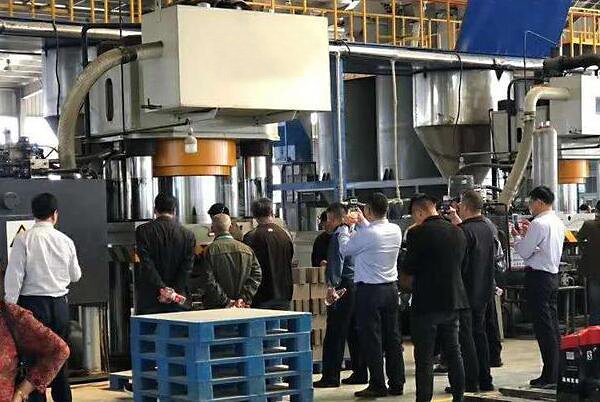
Refractory bricks are made of refractory materials, sand, fly ash, stone powder, gravel, construction waste, cement, etc. Shuntec Press has designed and produced a refractory brick powder hydraulic press, with a three-beam and four-column structure or four-beam four-column structure, which can process various silica bricks, high alumina bricks, magnesia calcium bricks, magnesia carbon bricks, magnesia bricks, and other refractory bricks with molds. Refractory bricks are widely used in high-temperature industries such as iron and steel smelting, building materials, non-ferrous metals, and chemicals.
The processing of refractory bricks is generally carried out through the cooperation of the pressure of the refractory brick powder forming hydraulic press and the mold. The specific parameters of the press can be based on customer requirements, such as tonnage, stroke, daylight, bed table size, and processing speed. It can be adjusted in ways such as the number of extra bricks in one mold.


According to the material, specification, density, etc. of refractory bricks, Shuntec Press can design and build 630 tons, 800 tons, 1200 tons, 1500 tons, 2000 tons, and other different tonnages of refractory brick powder compacting hydraulic presses for customers. Cooperating with automatic supporting devices such as automatic feeding devices, brick push-out devices, transfer devices, etc., we can realize the fully automatic operation of refractory brick production.
The refractory brick powder molding process
The refractory brick powder hydraulic press generally adopts a vertical four-column, two-way pressurizing structure, driven directly by the oil pump. It can realize two-way equal-quantity pressing, low and high-pressure multiple pressurizations, and stable pressure forming, and is equipped with a volume feeding device, product clamping and conveying device, and automatic adjustment device for brick thickness, which can meet various requirements of refractory material forming process. Loading-forming-bricking, the entire production process is fully automated.

